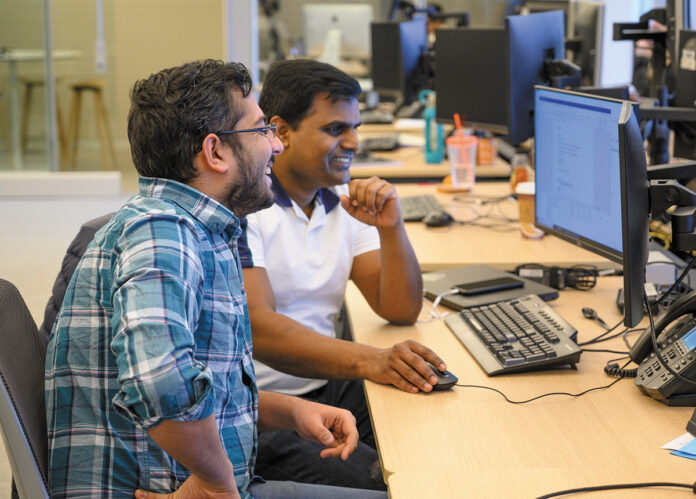
PBN Diversity & Inclusion Awards 2019
FINANCIAL SERVICES: Fidelity Investments Inc.
FIDELITY INVESTMENTS INC.’S commitment to a diverse workforce focuses on efforts within and beyond company confines by fostering future candidates while proactively seeking current prospects.
Amy Philbrook, head of diversity and inclusion at Fidelity, says the two parts of her title are intertwined. Diversity is about the number of diverse employees, she said, while “inclusion is about making those numbers count.”
The company sees the challenge of creating a more diverse, inclusive environment as an ongoing, legacy-building process.
“It’s important to us that this work not be episodic,” Philbrook said.
One area where Fidelity is proud to be making that long-term, systemic progress toward diversity, Philbrook said, is through the company’s diversity-minded hiring and recruiting.
“We’re reaching a broader set of employees than we would normally get if we just sat back and waited for people to apply,” she said.
First, Philbrook said, Fidelity is making sure the company is looking in the right places. Job fairs, for instance, are most effective when they’re held on campuses where people who are graduating are qualified to do the work Fidelity is hiring for.
‘We’re reaching a broader set of employees than we would normally get if we just sat back and waited for people to apply.’
Amy Philbrook, Fidelity Investments Inc. head of diversity and inclusion
The company has also increased the number of schools it recruits from, going from 12 to 200.
Also, the jobs themselves need to hit the mark.
Philbrook said Fidelity recruiters ask: “Are we sure that, if we show up in places, the jobs we have to offer will be appealing?”
Part of that appeal lies in how the job descriptions are written, Philbrook said. The descriptions need to be creative and focus on the importance of emotional intelligence, the awareness, expression and control of your own emotions, coupled with the ability to handle interpersonal relationships empathetically.
Fidelity seeks people who are digital natives with technical dexterity, liberal arts students, lifelong learners and agile problem solvers. Often, finding those skills requires seeking out people with nonstandard degrees, including those who’ve earned their degrees later in life.
Advertising outside established channels and offering novel incentives would be means to attract such talent. In the long run, though, Fidelity is hoping to help make the Rhode Island community one that is more likely to encourage the type of employees they would like to hire.
Fidelity’s PhD Project encourages people of color to become professors in order to increase the diversity of faculty at business schools.
The company also partners with the National Center for Women in Technology, a nonprofit aimed at increasing the influence and participation of all girls and women in computing.
The partnership between the PhD Project and the National Center for Women in Technology helps create communities that produce the people Fidelity hopes to recruit, Philbrook said. They also connect Fidelity with influencers and educators supporting the advancement of underrepresented minorities in technology, finance and business.
The PhD Project has had an immediate effect in its first two years.
“It’s a very clear signal to enrolling MBA students and graduates of color,” Philbrook said. When Fidelity visits a campus seeking diverse students, it has a lot of credibility due to making these efforts, she said.
“It’s one thing showing up and hoping diversity will come to you. It’s another to show that they have the ability to advance to the highest level of the company,” Philbrook said.
Fidelity’s efforts are paying off. Company statistics show that about 40% of top-talent program participants are now women and people of color.
“Our numbers are telling us that we are making progress, and we do not plan to take our foot off the gas. The people we are hiring represent more diversity – across every dimension – than our current workforce,” said Kimberly Reingold, Fidelity’s director of external communications.
“The good thing is our customers are noticing this, and employees are as well,” Philbrook said.












